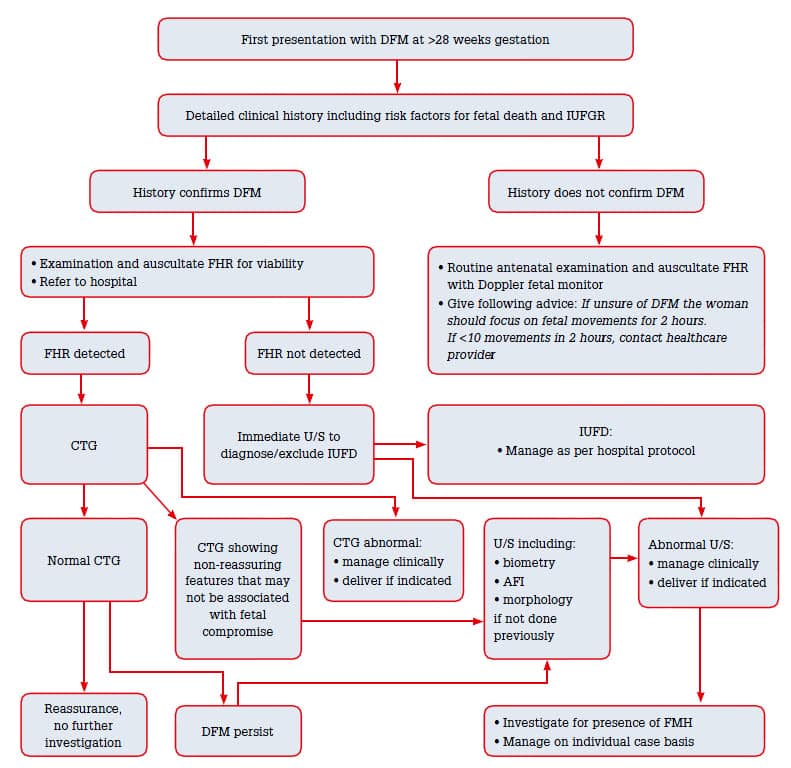Feel the Flutters? What to Know About Reduced Fetal Movements
Hello, wonderful expectant parents! Are you basking in the glow of pregnancy and eagerly awaiting every little kick and turn from your precious little one? Those movements are not just exciting; they’re also an important indicator of your baby’s well-being. As you journey through this magical period, it’s essential to understand what reduced fetal movements can mean and what steps to take if you notice a change in your baby’s activity pattern. So, let’s dive into this nurturing guide designed to give you clarity and confidence!
Why Baby Movements Matter
Every flutter and somersault in your womb is your baby’s way of assuring you they’re getting stronger and exploring their tiny, watery world. Movements can also signal that your baby is healthy and that their nervous system is developing properly. That’s why it’s so important to pay attention to your baby’s patterns of movement, especially in the third trimester.
What Are Reduced Fetal Movements?
As you’ve probably felt, your baby moves in cycles of activity and rest. Reduced fetal movements refer to a decrease in the strength or number of your unborn child’s movements. This change can sometimes suggest that your baby is not well, but keep in mind – different babies have different patterns! It’s the knowledge of your baby’s usual patterns that’s key to identifying any concerning changes.
Understanding Your Baby’s Movement Patterns
Typically, you’ll start to feel movements between 18 and 25 weeks of pregnancy if it’s your first time, or slightly earlier if you’ve been pregnant before. As your baby grows, these movements will become more frequent and more powerful, often peaking around 28 to 32 weeks. By the third trimester, you’ll likely have a good sense of your baby’s daily dance routine.
Here’s a quick tip: Note down the times when your baby is most active – perhaps after you eat or when you’re relaxing. This simple record-keeping can be invaluable for discerning what’s normal for your baby and alerting you to any significant changes in activity.
When to Be Concerned About Reduced Movements
If you feel that your baby is moving less than usual or if you’ve noticed a gradual decrease over several days, it may be time to take some action. The same goes if the movements have ceased altogether. This doesn’t necessarily mean something is wrong – but it’s important to get it checked out as soon as possible.
Here are some steps to take if you notice reduced fetal movements:
- Focus on your baby: Lie on your left side and focus on your baby’s movements for 2 hours. Drink some cold water or gently prod your belly to wake your baby up.
- Count the Kicks: Using “kick count” charts to monitor movements can help you detect any patterns and notice changes. Aim for any 10 movements within 2 hours, but remember, this is just a general guideline.
- Contact your healthcare provider: If you’re concerned about any change in movements, it’s best to consult your doctor or midwife. They might perform a non-stress test or an ultrasound to check on your little one’s wellbeing.
Dear reader, remember that while changes in fetal movement can be concerning, in many cases, there is a benign reason for the change. Nevertheless, it’s always better to err on the side of caution and seek professional advice.
Stay tuned for more detailed insights on reduced fetal movements as we delve deeper into understanding the nuances of your baby’s movements and the different factors that can influence them. After all, it’s all about ensuring the safety and health of your most treasured soon-to-be new family member!
So, embrace this journey with the knowledge that every flutter and wiggle is part of your incredible bond with your growing baby. And should those wiggles seem to slow, remember, you’re equipped with the know-how and support to ensure everything is just as it should be.

5 Essential Things Every Parent Should Know About Preparing for Reduced Movements
While we’ve covered the basics, there are a few more nuggets of wisdom to help you truly be prepared should you encounter reduced fetal movements. Let’s look at five key things that every parent should know:
- Get Informed Early: Start your pregnancy journey with ample knowledge about fetal movements. Reading up on what’s normal and attending antenatal classes can empower you to be attentive to your baby’s patterns of movement. The earlier you know what to expect, the more attuned you will be to any changes.
- Regular Check-Ups are Vital: Never miss an appointment with your healthcare provider. These regular check-ups can help affirm the health of your baby’s heart and overall well-being. Mention any concerns you have, including any subtle changes in movement patterns.
- Trust Your Instincts: Moms and dads, your intuition is a powerful thing! If something doesn’t feel right, speak up. Your healthcare provider is there to listen and take appropriate action. Don’t worry about overreacting; if you’re concerned, it’s always better to be safe.
- Maintain a Healthy Lifestyle: A balanced diet, adequate hydration, and proper rest can not only aid your baby’s development but also help you be more in tune with their movements. When you’re healthy and relaxed, you’re more likely to detect if there’s a change in fetal activity.
- Involve Your Partner: Two sets of ears, eyes, and hands are better than one! Your partner can help monitor movements, provide emotional support, and be there to assist if action is needed. Encourage your partner to be involved and to learn about fetal movements too.
Amidst the hustle and bustle of life, make time each day to pause and connect with your baby. This quiet time is not just for relaxation – it’s also for observation. Regular periods of stillness and focus can help you quickly notice if the pattern of kicks and turns shifts. It’s moments like these when your unique bond with your baby can also serve as a powerful tool for monitoring their health.
Understanding the personality and regular routine of your baby’s movements will give you a baseline to notice any changes. However, it’s also important to be aware that as your pregnancy progresses, the type of movements may change. As space becomes tighter for your growing little acrobat, kicks might be replaced with stretches, rolls, or wiggles. This is normal but should still be consistent in frequency and strength.
Lastly, remember that every pregnancy is unique, and there’s a spectrum of normal when it comes to fetal activity. What’s important is your baby’s normal. Keep a little journal or use an app designed to track these precious moments. Not only can it serve as a lovely keepsake for the future, but it’s also a practical tool to provide your healthcare provider with accurate information if needed.
Armed with knowledge, a supportive partner, and the reassurance of your healthcare provider, you can navigate this aspect of pregnancy with a little more ease. Stay observant, stay informed, and enjoy every precious flutter and kick that your baby so lovingly gives. And now that you’re equipped with the right insights, should those flutters seem a bit off, you know just what to do!
See more great Things to Do with Kids in New Zealand here. For more information see here
Disclaimer
The articles available via our website provide general information only and we strongly urge readers to exercise caution and conduct their own thorough research and fact-checking. The information presented should not be taken as absolute truth, and, to the maximum extent permitted by law, we will not be held liable for any inaccuracies or errors in the content. It is essential for individuals to independently verify and validate the information before making any decisions or taking any actions based on the articles.




